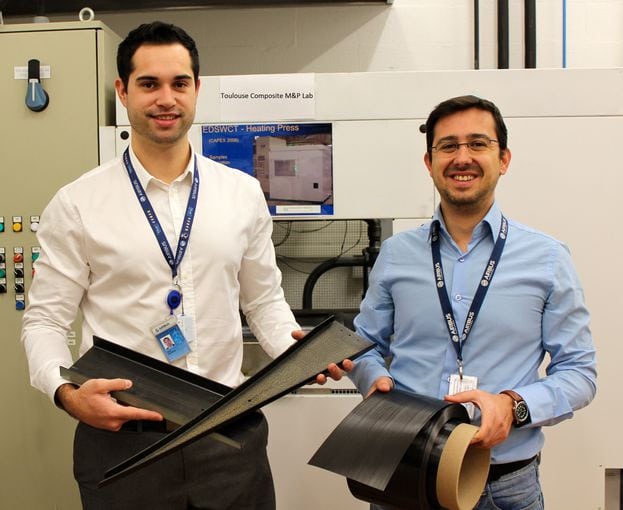 |
| Airbus engineers displaying thermoplastic carbon-fibre reinforced plastic material. Photo: Airbus |
[Avionics Today 01-20-2015] Airbus is working to maximize benefit of thermoplastic Carbon-Fibre Reinforced Plastic (CFRP) material in aircraft production. Airbus believes this material holds advantages over the thermoset-type CFRP that is more commonly used to produce air transport airframes, the main advantage being that thermoplastic CFRP is 100 percent recyclable.
CFRP materials — both thermoplastic and thermoset — are created when thousands of carbon filament threads are bundled together before being combined with a matrix to form a composite material. A ply or layer is made to the specified size and orientation, and then more layers are added until the piece has the necessary properties to support the loads it will carry. The resulting material is composed of approximately 60 percent fibers and 40 percent resin.
“With thermoset, you would need to burn the resin, and all you end up with are the fibers — the remaining 40 percent (the resin) is lost,” said Gael Sarrieu, a member of the company’s materials and processes team. “But with thermoplastic composites, the scrap produces the same amount of recycled material, which could be used in a variety of structural and interior applications.”
Unlike thermoset CFRP, thermoplastic-type composites also do not require curing in an autoclave and can be stored at ambient temperature without need of a freezer and temperature-controlled room, equating to significant reductions in energy costs.